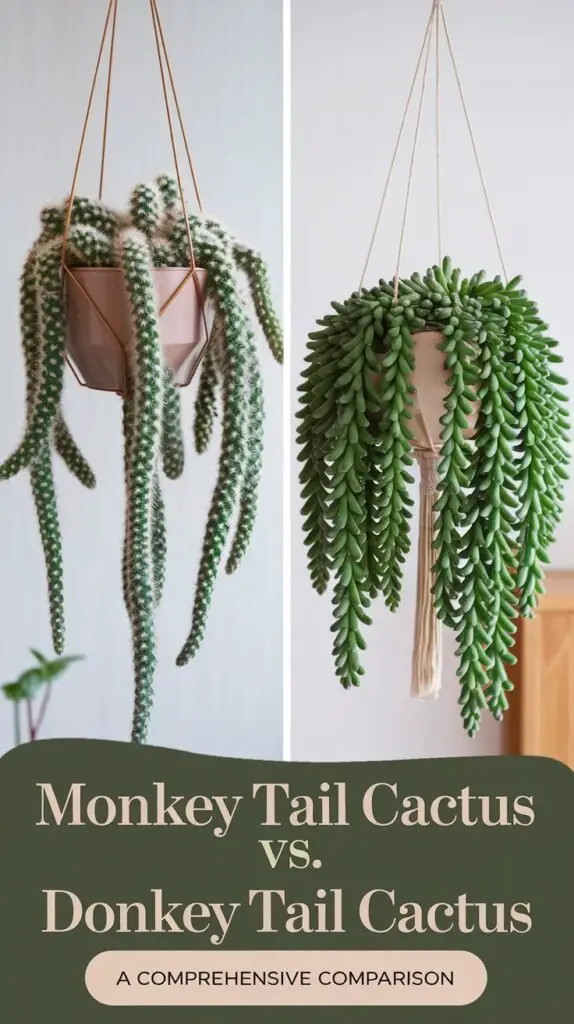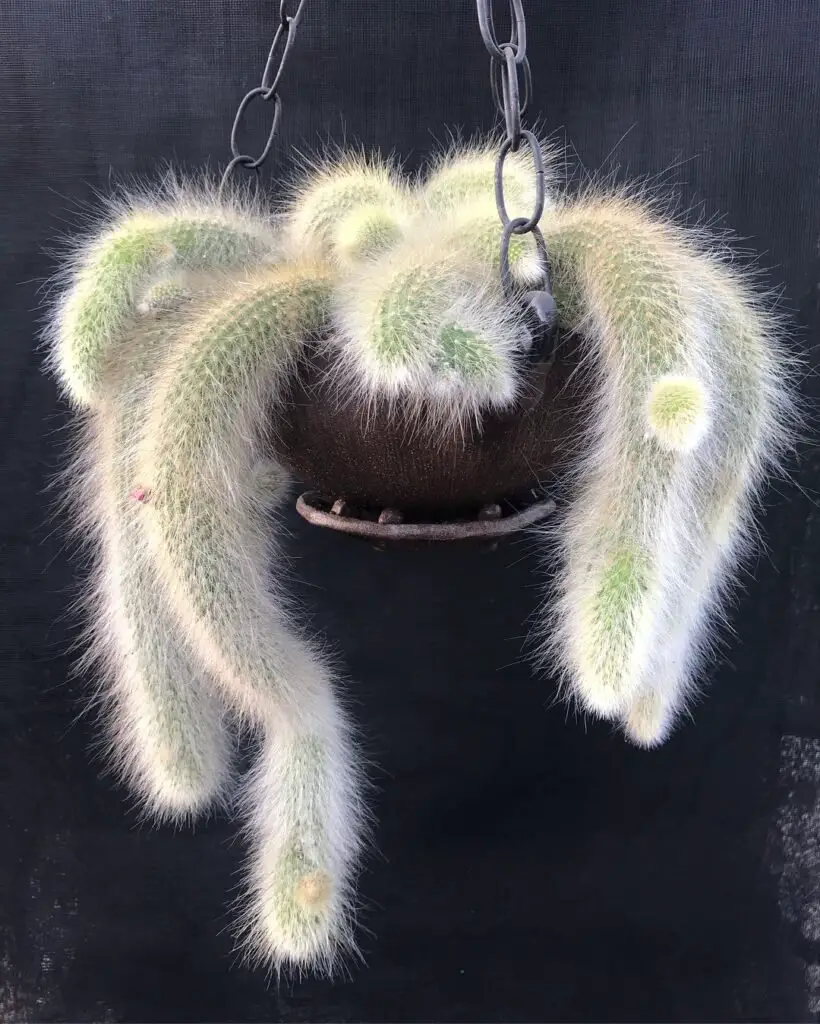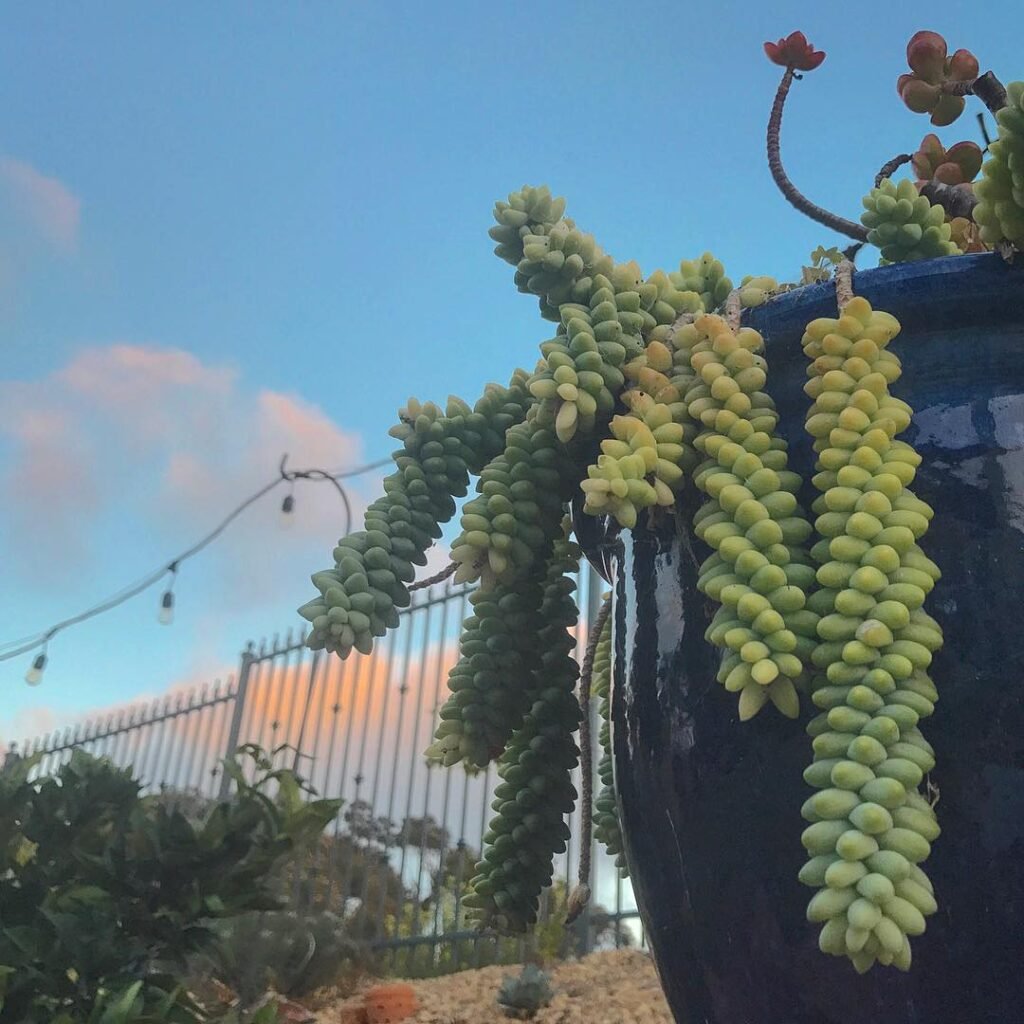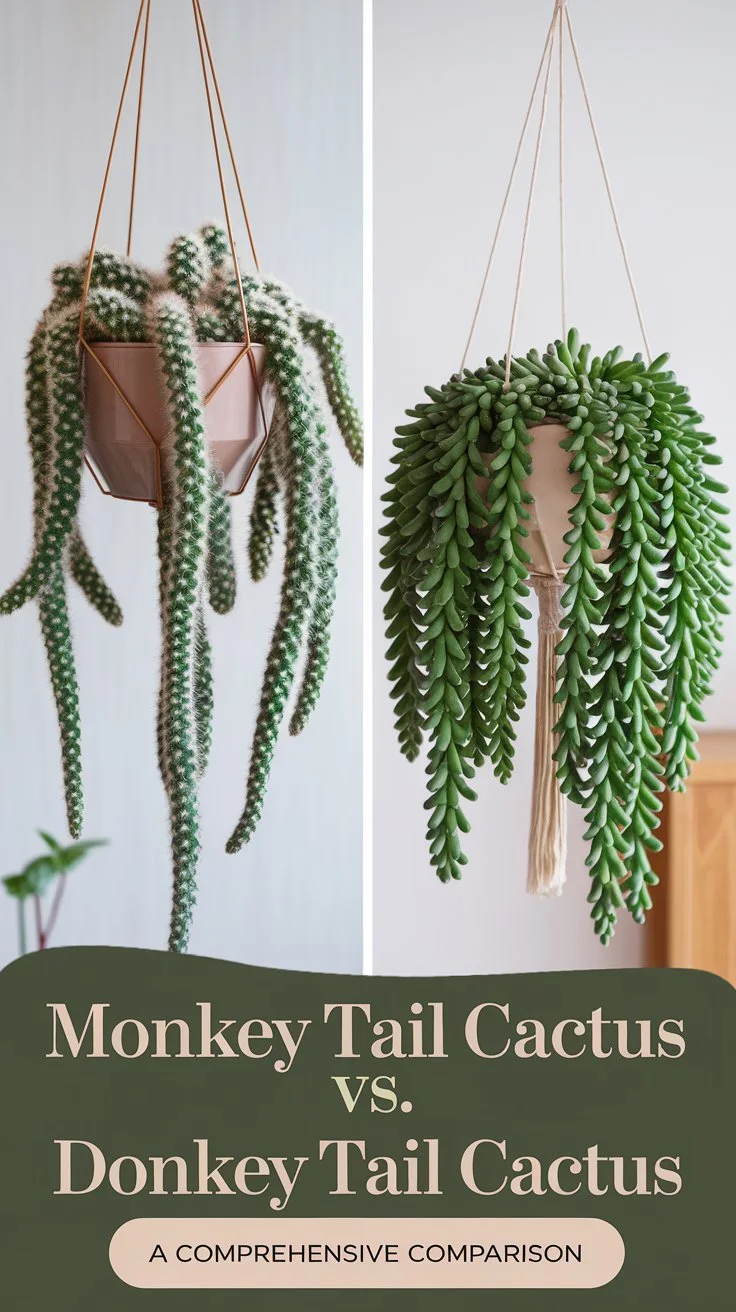Confused about monkey tail cactus vs donkey tail cactus? Discover key differences, care tips, and more in this guide by Ashley Scott, a 10-year gardening pro.

Have you ever wandered into a nursery, spotted a gorgeous trailing plant, and wondered, “Is that a monkey tail cactus or a donkey tail cactus?” I’ve been there too—more times than I can count! These two plants, with their quirky names and cascading growth, often leave gardeners puzzled. But don’t worry, I’ve got you covered. I’m Ashley Scott, and with 10 years of gardening experience under my belt, I’ve grown both of these beauties and learned their secrets. In this guide, we’ll dive deep into the monkey tail cactus vs donkey tail cactus debate, exploring their differences, care tips, and answers to your burning questions. Let’s get started!
Meet the Monkey Tail Cactus: A Furry Bolivian Beauty

The monkey tail cactus, or Cleistocactus colademononis, is a true cactus hailing from the rocky mountains of Bolivia. What makes it stand out? Its long, fuzzy stems draped in soft, white hair-like spines that give it a playful, monkey-tail vibe. These stems can stretch up to 8 feet, making it a stunner in hanging baskets or tall pots. Come spring or summer, it bursts into life with vibrant red or pink flowers that pop against its fuzzy green-yellow stems.
I’ll never forget my first monkey tail cactus. I was so mesmerized by its fluffy look that I couldn’t resist touching it—only to find those “soft” spines can still prick! It’s a lesson I’ve carried with me ever since.
Meet the Donkey Tail Cactus: Mexico’s Leafy Wonder

Now, here’s a fun twist: the donkey tail cactus isn’t a cactus at all! Known scientifically as Sedum morganianum, this succulent comes from southern Mexico. It’s famous for its trailing stems covered in plump, overlapping blue-green leaves that mimic a donkey’s tail. These stems usually max out around 4 feet, perfect for a cozy indoor hanging display. While it can sprout small pink or red flowers, they’re less flashy than the monkey tail’s blooms and rarely show up indoors.
My donkey tail cactus has been a loyal companion for years. I’ve learned to keep it out of harm’s way because one wrong bump and those fragile leaves scatter like confetti!
Monkey Tail Cactus vs Donkey Tail Cactus: Spotting the Differences
So, how do you tell these two apart? Here’s a handy breakdown:
| Feature | Monkey Tail Cactus | Donkey Tail Cactus |
|---|---|---|
| Scientific Name | Cleistocactus colademononis | Sedum morganianum |
| Family | Cactaceae (Cactus) | Crassulaceae (Succulent) |
| Appearance | Fuzzy stems with white hair-like spines | Plump, overlapping blue-green leaves |
| Growth Habit | Trailing, up to 8 feet | Trailing, up to 4 feet |
| Native Habitat | Bolivia | Mexico |
| Flower Color | Vibrant red or pink | Small pink or red (rare indoors) |
| Care Basics | Bright light, infrequent watering | Bright indirect light, sparse watering |
At a glance, the monkey tail cactus is a spiky cactus, while the donkey tail cactus is a leafy succulent. Easy, right?
Common Questions Answered
Is the Monkey Tail Cactus Safe to Touch?
You might be wondering, “Is the monkey tail cactus safe to touch?” Its fuzzy look is deceiving! While the hair-like spines are softer than typical cactus prickles, they can still irritate sensitive skin. I suggest handling it gently and wearing gloves for tasks like monkey tail cactus repotting to avoid any surprises.
How to Identify a Monkey Tail Cactus?
Need help with how to identify a monkey tail cactus? Look for those long, trailing stems cloaked in white hairs. Underneath, you’ll see greenish-yellow flesh. In the growing season, bright red or pink flowers seal the deal. If you’re still unsure, peek at the plant tag or ask a nursery pro.
Monkey Tail Cactus vs Rat Tail Cactus: What’s the Difference?
Another mix-up I hear often is rat tail vs monkey tail cactus. The rat tail cactus (Aporocactus flagelliformis) has skinnier stems with shorter, golden spines, unlike the monkey tail’s long, white, fuzzy ones. Both bloom in red, pink, or orange, but the monkey tail’s hairier look sets it apart. Curious? Check out this cactus identification guide for more.
How to Grow a Monkey Tail Cactus: Care Tips for Success
Ready to grow your own monkey tail cactus? Here’s what I’ve learned over the years:
- Light: It loves bright, indirect light but can handle a few hours of direct sun. Place it near a south or west window indoors. If it starts stretching (a sign of monkey tail cactus skinny issues), it needs more light.
- Watering: Water sparingly—let the soil dry out completely between drinks. In spring and summer, every 2-3 weeks works; in winter, cut back to once a month.
- Soil: Use a well-draining cactus mix. Add perlite or pumice to keep it airy—regular potting soil is a no-go.
- Temperature: Aim for 60°F to 80°F. It can dip to 20°F briefly but hates frost.
- Humidity: It’s fine with dry air but can tolerate some humidity with good airflow.
- Fertilizing: Feed it a diluted, balanced fertilizer once or twice in the growing season.
Monkey Tail Cactus Problems
Watch out for monkey tail cactus problems like overwatering, which leads to mushy stems or root rot. Pests like mealybugs or spider mites can pop up too. If your soft monkey tail cactus looks droopy, check your watering habits. For more cactus care tips, see my Succulent Care 101 guide.
Caring for Your Donkey Tail Cactus: A Beginner’s Guide
The donkey tail cactus is just as easy to care for, with a few tweaks:
- Light: Bright, indirect light is its sweet spot. Direct sun can burn those delicate leaves, so an east or west window is ideal.
- Watering: Water every 2-3 weeks in the growing season, letting the soil dry out fully. In winter, once a month is plenty.
- Soil: A succulent mix with added perlite or sand keeps it happy and drained.
- Temperature: It prefers 60°F to 75°F and needs protection from frost.
- Humidity: Average indoor humidity works fine—skip the steamy bathroom spots.
- Fertilizing: A diluted succulent fertilizer once or twice in spring/summer is enough.
Donkey Tail Cactus Challenges
Overwatering can cause leaf drop or root rot, and those fragile leaves fall off with the slightest nudge. Pests like mealybugs might sneak in too. For more succulent wisdom, visit the Cactus and Succulent Society of America.
Propagating Your Trailing Treasures
Both plants are a breeze to propagate—here’s how I do it:
Monkey Tail Cactus
- Snip a 4-6 inch stem with a sterile knife.
- Let it callus in a dry, shaded spot for 2-3 days.
- Plant it in cactus soil and water lightly until roots form (about 2-3 weeks).
Donkey Tail Cactus
- Gently twist off a leaf or stem segment—careful, they’re delicate!
- Let it callus for 2-3 days.
- Lay it on succulent soil and mist every few days until roots sprout (3-4 weeks).
Want step-by-step visuals? My How to Propagate Cacti and Succulents guide has you covered.
Fun Monkey Tail Cactus Facts
Here are some monkey tail cactus facts to impress your friends:
- It’s nicknamed the “monkey’s tail plant” for its furry look.
- In Bolivia, it thrives in rocky cliffs, showing off its tough side.
- Those red flowers? They’re pollinated by hummingbirds in the wild!
My Journey with These Trailing Gems
I’ve had my share of adventures with these plants. That first monkey tail cactus taught me to respect its spines, no matter how cuddly it looks. Meanwhile, my donkey tail cactus has survived my clumsy moments—once, I knocked it over, and it shed leaves everywhere! Now, it sits safely on a high shelf, thriving beautifully.
Wrapping It Up
So, monkey tail cactus vs donkey tail cactus—which wins your heart? The fuzzy, bold monkey tail cactus or the leafy, graceful donkey tail cactus? Both bring unique charm to your space, and with the right care, they’ll thrive for years. Why not grow both and enjoy the best of each world?
For more plant love, explore USA Garden Hub. Happy gardening!


2 thoughts on “Monkey Tail Cactus vs Donkey Tail Cactus: The Ultimate Guide”